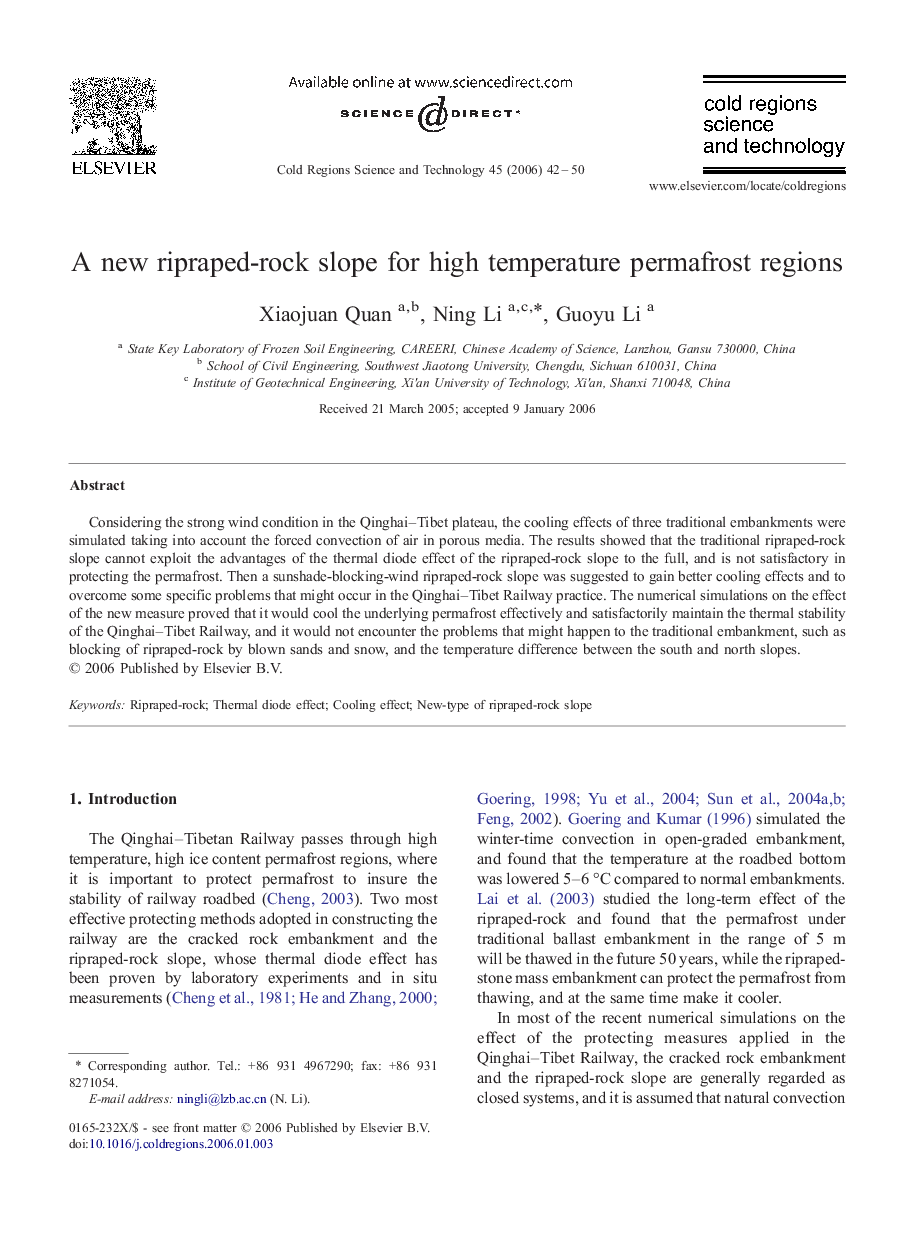| Article ID | Journal | Published Year | Pages | File Type |
|---|---|---|---|---|
| 4676891 | Cold Regions Science and Technology | 2006 | 9 Pages |
Considering the strong wind condition in the Qinghai–Tibet plateau, the cooling effects of three traditional embankments were simulated taking into account the forced convection of air in porous media. The results showed that the traditional ripraped-rock slope cannot exploit the advantages of the thermal diode effect of the ripraped-rock slope to the full, and is not satisfactory in protecting the permafrost. Then a sunshade-blocking-wind ripraped-rock slope was suggested to gain better cooling effects and to overcome some specific problems that might occur in the Qinghai–Tibet Railway practice. The numerical simulations on the effect of the new measure proved that it would cool the underlying permafrost effectively and satisfactorily maintain the thermal stability of the Qinghai–Tibet Railway, and it would not encounter the problems that might happen to the traditional embankment, such as blocking of ripraped-rock by blown sands and snow, and the temperature difference between the south and north slopes.
